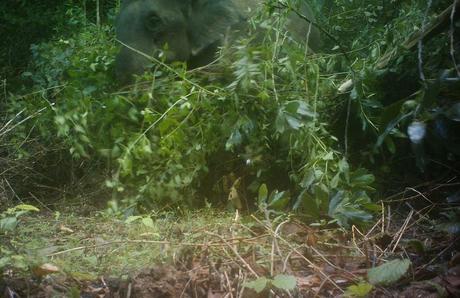Now that seems pretty strange doesn’t it – you wouldn’t think that getting charged by elephants can provide you with management insights (heart palpitations, yes, but not management). But if you are a conservation biologist working in the field, particularly in places like India, you would have learned management skills in the best (or worst, depending on your point of view) possible way: falling flat on your face while getting charged by an elephant. Hopefully more metaphorically than literally, because elephants have big feet.

Of course the last thing you would do while getting charged by an angry tusker is take out your notebook and write training notes (the note-taking actually happens afterwards). But consider the charge in the larger context of a field project. In Canada (where there are no elephants but there are woolly mammoths… uh I mean grizzly bears), you would be extensively prepared for such situations: lots of training sessions, carrying bear spray etc. Though I wonder if that spray is more dangerous than a bear…. But anyway, the point is there are well-thought out protocols for everything. Although sometimes, these very valid protocols become surreal – like instructions on how to close gates in such a way that your fingers don’t get crushed!
By contrast, a greenhorn ecologist in India would be more likely dropped off at dawn among a herd of elephants, with a vague instruction: “When [not ‘IF’] you get charged, don’t run in a straight line, try to duck behind a tree. This aint discovery channel”. Trial by fire, and if you get through that you are set for life. But a lot of people burn unnecessarily.

Well, there must be some middle ground between over-protection and non-existent training! Over-protection hinders your ability to deal with unexpected life-death situations that commonly come up in the field, whereas the latter leads to terrible attrition rates where good people leave because of poor management practices (or due to ghosts). I have been trying to work out this balance and apply some standardized form of training in large mammal fieldwork over the past few years, and lots of unfortunate people have been unwitting participants in these experiments!
Another thing that you get better at over field time is reading and understanding risk, which can be applied to all kinds of things ranging from managing conflict to maximizing productivity. For example, that person who just threatened you or your colleagues with dire consequences should you continue doing your conservation work. How credible is that threat? What are the means by which it can manifest? And if its credible, how do you set up multiple redundant defenses, and in such a way that the show goes on without interruption?
A very satisfying thing I learned empirically in the field – and much later, in my economics class – is the issue of wage rates, labour supply and productivity. The idea being that if your wages are increased, you are willing to work longer hours to earn more. But at a certain point, you have enough money and now you start valuing leisure time more than money. So any further wage increases don’t translate to increases in productivity. Other kinds of motivators then become very important – such as greater responsibility or functional autonomy. All this may be management 101, but I got very excited when I first read about it – it was very interesting to crunch the numbers and get the result empirically!
